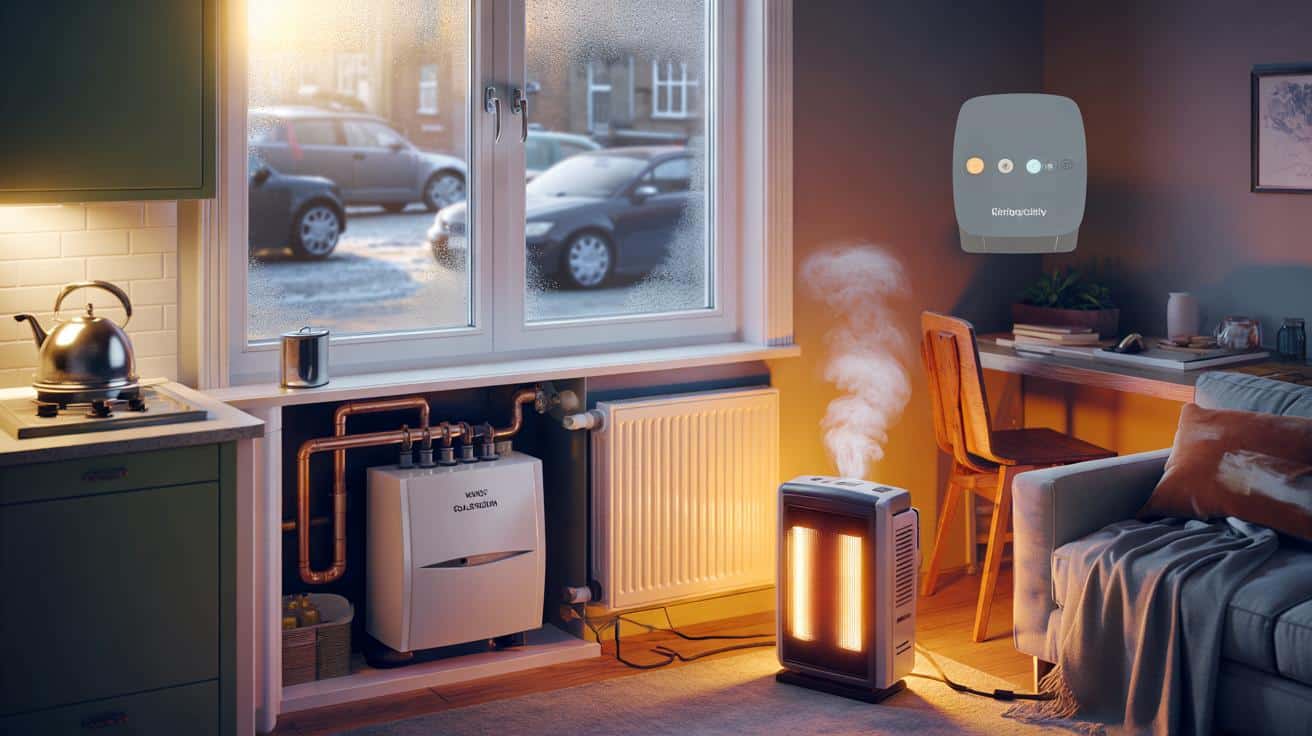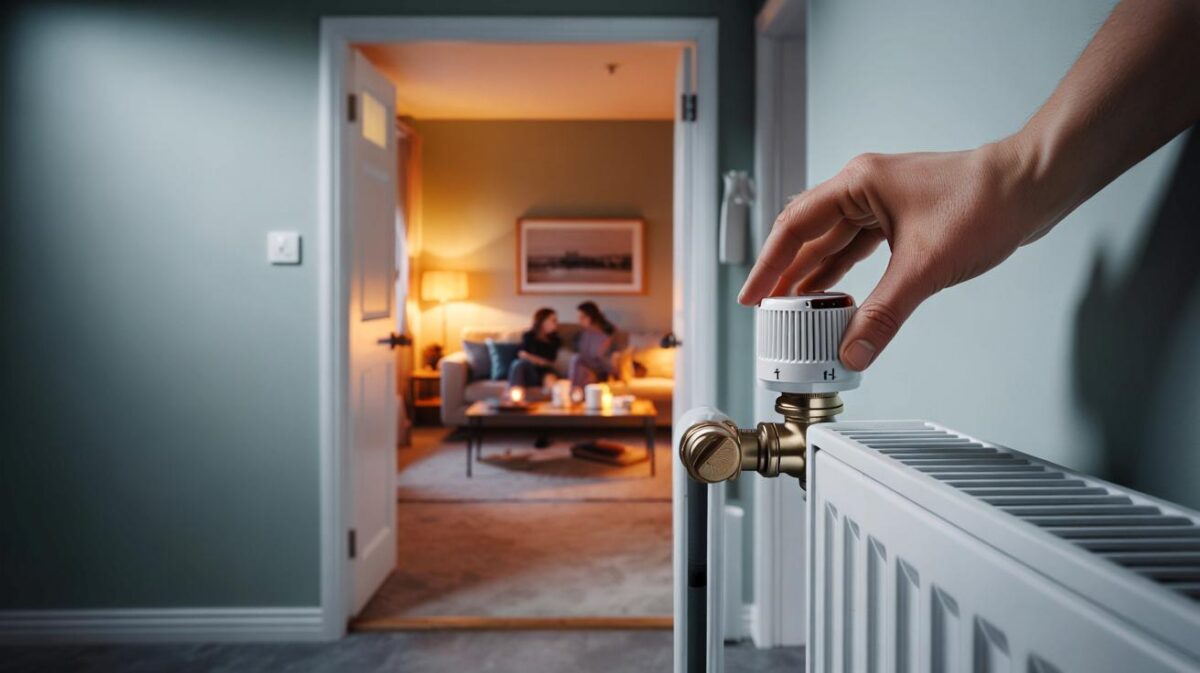Small UK flats sit in a strange place: close neighbours lend warmth, yet a couple of chilly evenings can drain a prepay meter. The big question that keeps coming up in group chats and stairwells is simple enough: stick with gas, or go electric?
It’s 7:12am in a Hackney studio and the tiles are cold enough to make your feet flinch. The boiler coughs into life, radiators ticking like a pocket watch, while a cheap plug-in heater hums by the desk and throws instant heat at your knees. Outside, a low sun drags across frosty cars; inside, the air feels damp around the windows, a thin moustache of condensation forming by the frame. I scroll through a price-cap explainer on my phone and weigh a humdrum decision that somehow feels loaded: gas for the whole place, or targeted electric just where I sit. The kettle clicks. The numbers don’t care about my toes.
The choice feels bigger than it should.
What the numbers say for a small flat
The gap between unit prices and standing charges is where the real story lives. Across Great Britain right now, typical capped unit rates sit roughly around 22–28p per kWh for electricity and 6–7p per kWh for gas, with standing charges near 60p a day for power and about 30p a day for gas. So yes, **gas is still cheaper per unit** of heat if you’ve got a workable boiler. Yet that extra daily fee for keeping a gas meter connected can tip the scales for light users in snug, well-insulated flats. Low heat demand magnifies the impact of standing charges, not the unit rate.
Take a 45m² one-bed in Manchester using around 3,000 kWh of heat over the year. A middling boiler at, say, 85% seasonal efficiency turns that into roughly 3,530 kWh of gas, costing about £210–£250 in units plus ~£110–£130 in standing charges. Direct electric panel heaters at 25p per kWh land closer to £700–£800, with no extra gas daily fee. A compact air-source heat pump at a COP of 3 trims that to around £250–£300 on the electricity bill, and you can drop the gas meter altogether. The same flat with traditional storage heaters on Economy 7 might average ~18–20p per kWh, leaving you somewhere in the £540–£600 range.
So the logic runs like this: direct electric tends to cost more than gas for space heating because electricity’s unit rate is higher, but heat pumps alter the equation. A decent COP of 2.5–3.5 can bring your effective cost per unit of heat down near gas territory, sometimes below it, especially when you ditch the gas standing charge. Smart time-of-use tariffs can help storage heaters and heat pumps too, if you can push more heating into cheaper periods. Older, draughty flats blunt the benefits; tight, mid-floor flats magnify them.
How to heat a small flat for less this winter
Start with the heat you actually feel. Run a lower whole-flat set-point, say 18–19°C, and add a near‑person heat source where you sit for hours — a small infrared panel by the desk or a heated throw on the sofa. Close doors, block gaps at thresholds, and nudge humidity into the 45–55% sweet spot so the air feels warmer at the same temperature. We’ve all had that moment where one room roasts while the hallway bites; zone your life, not the building.
Don’t let the thermostat yo‑yo. Pick a sensible target, then stick with gentle schedules to avoid expensive spikes. Dry clothes in one ventilated room with the door shut, not draped over radiators that brew condensation and mould. Storage heaters need their input set before bedtime and output kept low through the day; keep that rhythm and they sing. Let’s be honest: nobody actually does that every day. Try for most days, and you’ll lock in the cheaper hours without the drama.
People often ask what an energy adviser would do in a small flat with a tight budget. The answer isn’t glamorous, but it works.
“Cut the background heat a notch, warm the person not the whole air, and chase cheap hours if your kit allows it. The rest is draughts and habits.”
- Lower whole-flat set-point by 1°C; save roughly 5–10% on space heating.
- Use a heated throw (50–100W) for evening comfort instead of a 2kW fan heater.
- Run an hour of bathroom/kitchen extraction when drying clothes to keep damp down.
- If you’ve got Economy 7, push hot water and preheating into the night rate.
- Bleed radiators and set TRVs so bedrooms run cooler than the living space.
So which is cheaper right now?
For many small UK flats, gas still wins on raw running cost if you’re comparing a functional boiler with direct electric heaters. The per‑unit gap is stubborn. Yet the picture flips for low‑use households that can remove the gas meter: once you lose that daily gas fee, a modest heat pump can undercut a gas boiler, and careful Economy‑7 use can narrow the gap for storage heaters. Mid‑floor, well‑insulated flats are the sweet spot, because their heat demand is modest and stable. Older ground‑floor places with draughty floors tilt back toward gas, unless you tackle the fabric and get clever with off‑peak. What matters most isn’t brand names or fanfare — it’s your actual kWhs and when you buy them. Share numbers with neighbours, compare bills, and test a weekend routine. **Standing charges swing the maths.**
| Point clé | Détail | Intérêt pour le lecteur |
|---|---|---|
| Unit rate vs standing charge | Elec ~22–28p/kWh, gas ~6–7p/kWh; daily fees ~60p (elec) and ~30p (gas) | See where the real cost sits for light vs heavy users |
| Appliance efficiency | Direct electric ≈100%; gas boiler ~80–90% seasonal; heat pump COP ~2.5–3.5 | Estimate true cost per unit of usable heat in your flat |
| Flat type and habits | Mid‑floor, insulated, stable routines favour off‑peak and heat pumps | Match your home and lifestyle to the cheapest heating path |
FAQ :
- Is a heat pump in a flat really cheaper than gas?Often for low‑to‑moderate heat demand, yes. With a COP around 3 and no gas standing charge, the annual total can beat a boiler, especially in a mid‑floor flat.
- Are electric radiators “100% efficient” — does that make them cheapest?They convert electricity to heat efficiently, but electricity costs more per kWh. Efficiency isn’t the same as cheap; the tariff decides the bill.
- Should I switch to Economy 7 in a small flat?Only if you can push enough load into night hours — storage heaters, hot water, maybe a small thermal preheat. If you’re home daytimes, you may pay more.
- What if I only use my gas for two cold months?Dropping the gas supply saves the standing charge year‑round. If you can heat with a heat pump or well‑managed off‑peak electric, the numbers can stack up.
- Cheapest safe way to warm one room fast?Close the door, stop draughts, and use a small infrared panel or a heated throw while the base heating idles lower. **Heat the person, not the air.**








